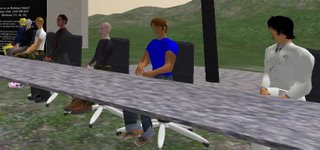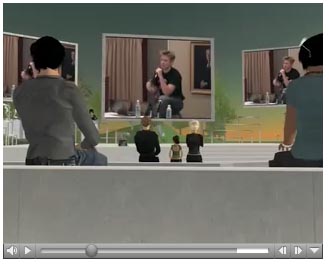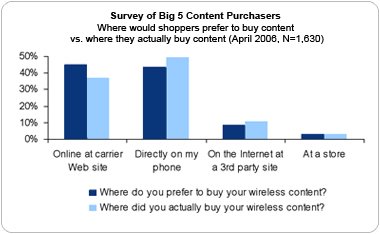Paul Hemp has an article up on the Harvard Business Review titled, "
Avatar-Based Marketing."
From the
article:
"In Second Life, you live in a new body and take on the identity of your “avatar”—that is, a being you’ve created as a representation of yourself in this online environment.
Avatars aren’t the only personal creations in Second Life. Nearly everything in this world—which encompasses 50 virtual square miles and would take days to walk across, although you can save time by flying or by instantly teleporting yourself from one place to another—has been made by Second Life residents.

Second Life is just one of a growing number of three-dimensional virtual worlds, accessible via the Internet, in which users, through an avatar, are able to play games or simply interact socially with thousands of people simultaneously. By some estimates, more than 10 million people spend $10 to $15 a month to subscribe to online role-playing environments, with the number of subscribers doubling every year.
The combination of robust virtual-world commerce and the growing overlap of virtual worlds and the real world suggests opportunities for creative real-world marketers. So far, there have been few instances of real-world products being sold in virtual worlds to real-world users for delivery to their real-world addresses.
"It doesn’t cost anything for someone to create an individualized outfit, even mixing several brands," says Dave Kopp, head of community applications at Yahoo and manager of the company’s avatar program. "And it doesn’t cost anything for companies to supply the products that become part of this act of self-expression and personal brand endorsement."
More
Dave Kopp:
David Kopp, Yahoo: "People want an image to represent themselves in their interactions with others."
David Kopp, Yahoo: "In the future, I think we will see much more realism, much more animation, much more interaction in avatars, and we'll move towards virtual worlds."
Paul Hemp
interview:

Ad Age Digital: This concept is almost philosophical and is certainly psychological -- how did you conceive the story?
We're talking about two things here. One is the next marketing frontier, which is virtual worlds and all the rich possibilities that entails, particularly in massive multi-player online games where you have thousands of people interacting simultaneously. And [there are signs] everybody's just beginning to think about that -- Microsoft buys Massive, for example.
To get way ahead of the curve, smart marketers need to be thinking about not only "where" are these virtual-marketing opportunities, but the "who." Who are the actual consumers in this environment? Are they the consumers who pony up their credit card number to play the game or are they the avatars people have created to represent themselves in these new worlds?
The real-world human controls the real-world wallet. But it does seem to me that these 10 million avatars out there represent a distinctly different universe of shadow consumers who are able to influence their creators, make their own purchases through the hand of their creator and at the very least give some insight into the hidden desires of the creators."
From
Régine Debatty:

"In Second Life, marketers can simply become residents and have their avatars try out marketing initiatives for free—something a number of companies are already doing, according to David Fleck, from Linden Lab. “People think they need to create a partnership with us, but all they have to do is join, go and buy a chunk of land, and then do what they want to do,” says Fleck.
From
Clickable Culture:
"I think
Second Life has engagement potential, but doesn't offer the instant engagement offered by most massively-multiplayer games (
Second Life is not a game in my view), and even simpler, more controlled virtual worlds like
Habbo Hotel. The best kind of engagement is with other avatars, and the more I consider it, the more I think word-of-mouth marketing is the most effective way to reach residents of
Second Life (aside from plastering the client software with built-in ads)."
Labels: ATT, Second Life


























